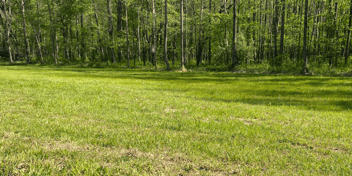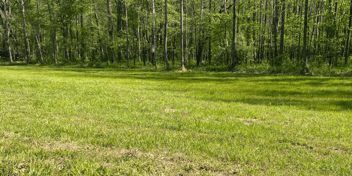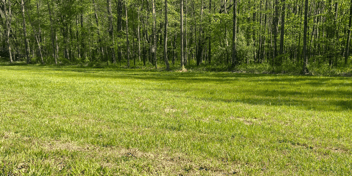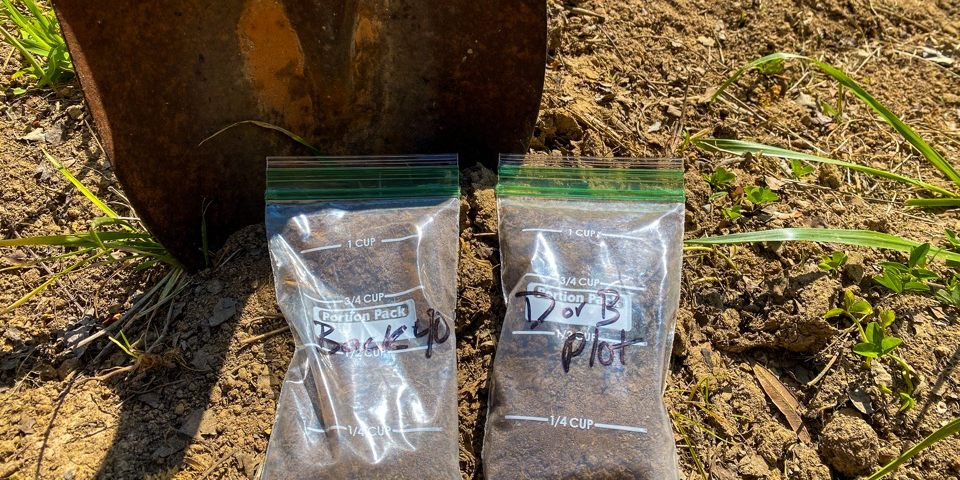
Food plots have taken on a life of their own in the world of hunting. Most hunters are somewhat familiar with food plot creation these days, and companies like Mossy Oak, with their Biologic products, have made it even easier providing mixtures that grow decent crops with very little soil preparation.
The series on food plots is not meant for the hardcore conservationist. It’s about the average American hunter. It's about the person who doesn’t have a $35,000 CASE tractor, a $15,000 planter, and every other implement necessary to do lightweight but authentic farming for wildlife.
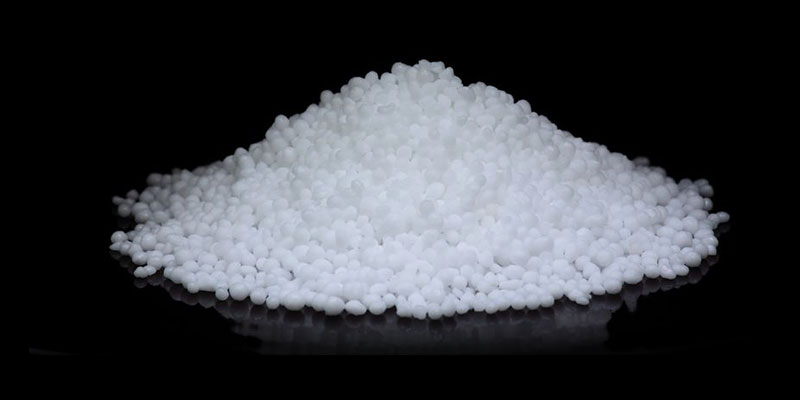
Most likely, you may, at best, have access to a tractor. And what you need is a little bit of knowledge to keep you from making mistakes and wasting money.
What you do have is an ATV or SXS (Side-By-Side) and some type of pull-behind spreader. You can plant food plots with that rig, but you just need to keep your expectations in check. It can be done, and don’t let anyone tell you it can’t. It’s just about how hard you’re willing to work and how creative you can be with fabricating some homemade implements to get the job done.
If you’re going to spend the money, and if you’re going to invest the huge amount of time food plots take to create, then you need to know about fertilizer and soil preparation to get the most bandwidth from your efforts.
Whether you are a waterfowl hunter or someone looking to increase antler size on the farms where you’re wanting to grow healthier deer, food plots are becoming more of a necessity than a nicety.
Mossberg has been churning out some great insights on food plot fundamentals. You have two solid videos on Food Plots and preparation: How To Get Started Planting Food Plots For Ducks. and Choosing The Right Crop For Ducks.
Keep In Mind
You’re not farming for a yield, you’re farming for conservation. This means that you don’t need to spend all the money to get the perfect crop; you just want a solid stand of crops. You do, however, need to do it right. Just filter what farmers tell you because they are looking at maximum yield ratios and you are not. Ask a lot of questions and be clear about what you want. Today, let’s cover a core group of necessities in terms of getting your soil right for the food plots you’re thinking about planting.
3 Key Tools
No matter if you’re planting for ducks or deer, you’re going to have to address these key issues:
- Fertilizer: nutrients that increase plant life and health.
- Herbicide: chemicals that keep weeds from sucking the life out of your plants.
- Pesticide: chemicals that keep insects from destroying your plants altogether.
Trust me, you must have all three. Skip one, and you’ll regret it. Guaranteed.
Fertilizer
Fertilizer is about strengthening the dirt. It’s a huge, huge component to getting your crop to come out of the ground.
On one of my duck holes, there is a drain that splits the hole itself. Think of a small ditch, about 8 feet wide and 1 foot deep. It doesn’t take much on the flat Mississippi Delta to drain water! However, that drain can cause real problems in the spring because it stays wet … which means it can be awful just trying to get through it with an ATV, much less a tractor loaded with a fertilizer buggy.
We were able to fertilize the Northwest section this spring, but we could not get the fertilizer buggy through the drain; therefore, we planted the corn without it on the Northeast side.
The difference was staggering. On the fertilized side of the drain, I had corn that is 8 feet tall. On the non-fertilized side, the corn never grew more than 3-4 feet and had virtually no ears whatsoever. I had to replant that section with Milo.
What Type Of Fertilizer?
Corn, Milo, or Millet?
If this is your crop, then go with Nitrogen. Which is typically going to be called “UREA.” It will say UREA on the bag or most importantly 46-0-0 or maybe 46-00-00. That stands for 46% nitrogen.
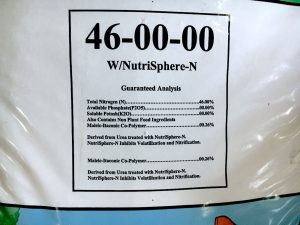
Just be sure that you ask about how much per acre you’re going to need; and, make sure you calibrate your spread to throw it out proportionally. With corn, you’re typically not going to over-fertilize it unless you just get plain stupid with the application. For me, about 120-150lbs per acre is solid. That means you’re looking to spend $60 per acre, for a bag of UREA is normally around $20 give or take.
Beans
Beans are a legume, and that means they create their nitrogen. However, it doesn’t mean that you shouldn’t add a little nitrogen. In most cases, you fertilize beans with Phosphorus or Potassium. You could probably get away with spreading a 50lb bag of UREA per acre on your bean plots in case your beans get weak, but be careful.
What Kind Of Herbicide?
The answer to that question is 100% dependent on what seed you plant...
Round-Up Ready Corn or Beans.
If you’re planting corn or beans, do yourself a favor and purchase Round-Up Ready Corn. You’re going to need to spray for wild grasses and weeds and don’t kid yourself that it won’t matter. It will matter. If you don’t spray for weeds, they compete with the nutrients in the soil. And you want all those nutrients going toward your plants, not weeds.
Milo or Millet.
There is no such thing as Round-Up Ready Milo. Not yet, at least. Atrazine is your answer for Milo (Sorghum). Both Milo and Millet are grass plants and will not tolerate Round-Up. Atrazine actually can be applied as a pre-emergent or a post-emergent. However, Atrazine is best applied before any shoots of grass emerge.
What Kind Of Pesticide?
That’s going to depend on where you live in the nation. However, you can bet that pests will get on your crops. Count on that. I Duck hunt on the Mississippi Delta. This means we have caterpillars, earworms, and most importantly, armyworms. Please notice: Armyworms can destroy your crop in 48 hours. (Been there. Seen that. Almost cried.) I once planted Millet. A rain fell 2 days later. It was magic! My Millet came up like a boss. Armyworms love green shoots of new grass. And when they hit, they earn their reputation. They are an army of destruction. They wiped me out in 2 days and I had no idea it was happening. If you plant Milo or Millet, you need to have your food plot checked every day if you’re not going to spray pesticide. For me, I spray it anyway. It’s just too important not to do it.
The pesticide I use is commonly referred to as Karate. As in, martial arts! It’s about $35 a gallon, and a gallon will for sure get you through one season easily. One application of Karate will last approximately 10 days. However, once Milo or Millet gets to a grown stage, you’re done. You’ve made it through the gauntlet. Corn, however, is susceptible anytime to pests like earworms, caterpillars, and other bugs that eat away at it.
Phase By Phase Game Plan
In most cases, this is your work grid for soil preparation and food plots. Be sure to wear gloves and protective equipment. I never handle chemicals without them. And don't get any of it on you. These are toxic items you're handling, and you cannot afford to be naive. In terms of this process below, please realize there are going to be people that always tell you that you’ve left out this or left out that, or you need to think through this, etc, etc. Again, this is about what we commonly refer to as a “general rule.”
Phase One: Usually Done In A Day
- Till The Soil Well With Two Passes.
- Broadcast The Fertilizer
- Till Soil Gently To Put Fertilizer Into Soil
- Harrow The Soil For Smooth Planting
- Spray Atrazine On Soil If Planting Milo Or Millet
- Wait A Week To Let Atrazine Sink Into Soil
Phase Two:
- Plant The Seed With A Planter.
- If you’re planting Millet, you’ll need to drag it lightly to cover the seed. If you’re trying to plant Milo with a broadcaster, you’ll need to drag it to cover the Milo hopefully ¾ inch to cover the seed. A real planting implement or No-Till drill is much better for Milo.
Phase Three:
- Usually 14 Days Later Spray Round-Up On Corn or Beans
- If you’re using Milo or Millet, spray Karate.
Phase Four:
- Spray herbicide if weeds need it.
- Monitor from there on out for Armyworms.
Hopefully, this will help give you a framework for how to fertilize your soil bed for food plots. Regardless of what you’re hunting, food plots make a massive difference. Food plots have to be large enough. A half-acre won’t support more than 1 deer usually, so if you cannot plant decent-sized plots it’s going to be tough on you. All in all, the more food plots you have, the better the hunting is going to be as a whole.
Would you do me a favor? If this helped you, it might help your circle of friends, too. Would you post the link in your Facebook status or forward it in an email? That’ll go a long way in better conservation for wildlife

About the Author



